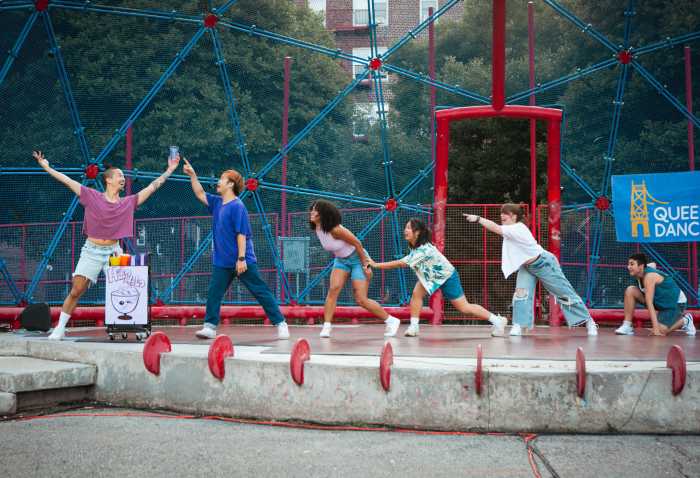
Governor Andrew Cuomo’s Office
Aug. 30, 2019 By Allie Griffin
The much-heralded Kosciuszko Bridge opened this week and features an expansive bike and pedestrian path — but many bicyclists say the pathway is dangerous to get to since access is via a number of truck-heavy streets.
The bridge includes a 20-foot wide bike and pedestrian path, but the lack of bike lanes through the industrial neighborhoods on either side of the bridge makes it difficult and often dangerous for cyclists to get to.
The two-span bridge fully opened to vehicles, pedestrians and cyclists Thursday and replaces its out-dated 1939 predecessor which frequently lead to backed-up traffic. It connects Greenpoint, Brooklyn to the Maspeth and Sunnyside neighborhoods in Queens.
The bridge project was constructed by the state, but the city controls the roadways surrounding it and thus the construction of bike plans on those roadways.
While the city’s Department of Transportation has plans to create additional bike paths connecting to the Kosciuszko Bridge on both the Brooklyn and Queens sides, cycling activists and politicians are questioning why the bike lanes were not completed in time with the bridge’s opening.
New York City Comptroller Scott Stringer penned a letter to the DOT’s commissioner denouncing its decision to open the bridge’s bike path without any bike paths to get there. He called on the department to add protected bike lanes and traffic calming measures on the streets leading up to the bridge.
“Just as no transportation department would open up a highway before constructing the on- and off-ramps, it is utterly baffling that a new bike and pedestrian path could be introduced without sufficient connecting infrastructure – on Day One,” Stringer said. “The rebuilt Kosciuszko Bridge and the new pedestrian and cycling path are critical arteries, but without protected bike lanes, sufficient lighting, and high-quality signage in the immediate vicinity, cyclists and pedestrians could be placed in harm’s way.”
A DOT spokesperson told amNewYork that bike lanes will be added to the roads leading up to the Kosciuszko Bridge “soon.”
The complaints come amid increased calls for cyclist safety, as 19 cyclists have been killed in 2019 alone — nearly twice the number of deaths in 2018. The fatal crashes have occurred disproportionately in heavily industrial areas that have experienced an increase in their residential populations, according to the DOT.
“If you look at the Kosciuszko Bridge and what it’s trying to connect, it’s predominantly industrial areas in Queens. When you’re talking about industrial areas, you’re talking about trucks,” said Juan Restrepo, the borough organizer for the nonprofit Transportation Alternatives.
“We’re seeing that in this year specifically it is trucks that are killing New York City cyclists. They are so large and often times they don’t have proper sight lines, so creating that separate dedicated space to ride your bike and for truck drivers to drive their trucks is so integral to ensuring that this bridge is going to be safe and accessible.”
The on and off-ramps to the BQE are another obstacle for cyclists trying to reach the Kosciuszko Bridge, Restrepo said. For instance, he said that there aren’t any signs directing cyclists to its pathway entrance on the Queens side.
Restrepo said he had to bike underneath a highway overpass through a road with “tons of truck traffic” to get onto the bridge’s bike path. Even as “an able-bodied 28-year-old” and longtime cyclist, Restrepo said he felt his life was at risk.
The bike network that the DOT plans to install leading up to the bridge consists largely of “shared” bicycle lanes as opposed to “protected” lanes. Bicycling advocates argue that the plans are inadequate and that a network of protected bicycle lanes is what’s needed.
Stringer, in his letter to the DOT Commissioner, advocates for the construction of protected bike lanes.
“This is a matter of life and death,” Stringer said. “At a time when the city is reeling from a spate of cyclist fatalities, a comprehensive plan must be implemented.”
One Comment







This new bridge is a dud.
My GPS wont even take me that way anymore cause the traffic is worse than before the construction.